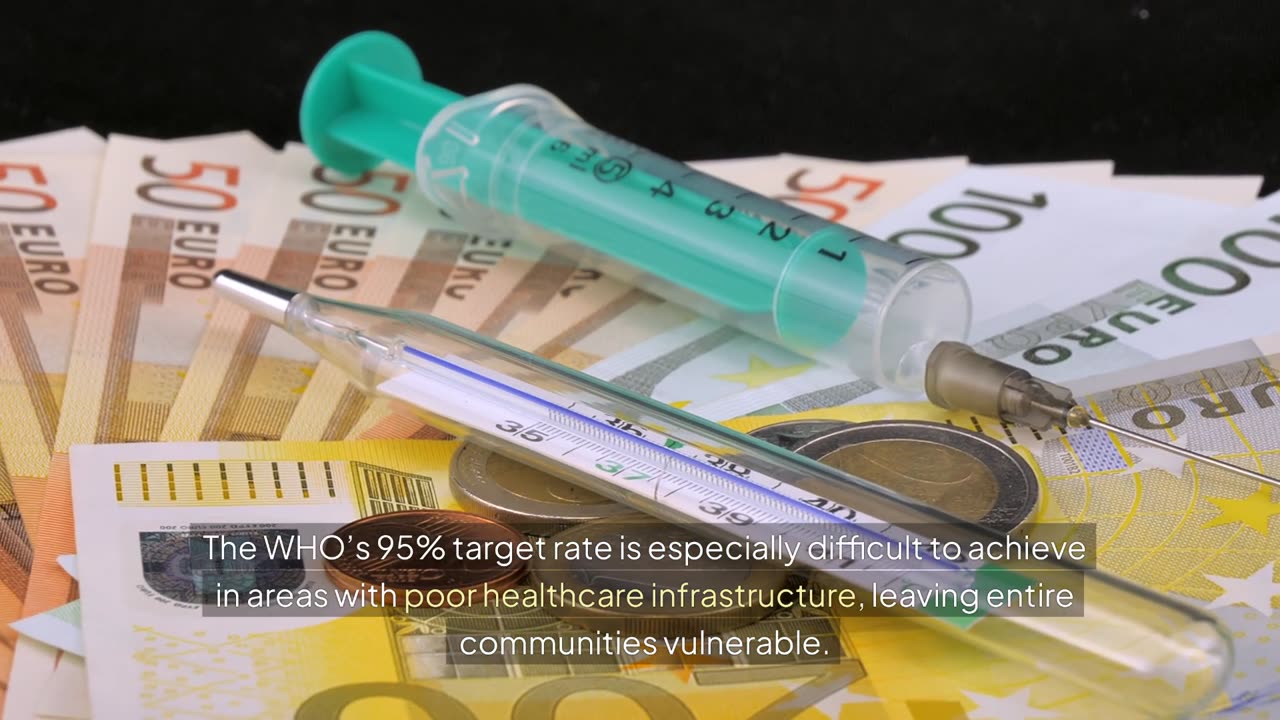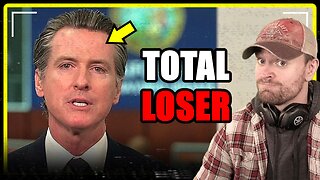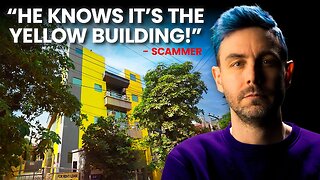Premium Only Content

The Alarming Rise of Measles: Why Vaccination Rates Are More Critical Than Ever
A sharp resurgence in measles cases is unfolding across the globe, with a 20% increase in cases reported by the World Health Organization (WHO) over the past year. Measles, once on the verge of elimination, has now become a looming threat, especially for young children who are at the highest risk of severe complications. As vaccination rates dip below target levels, the consequences are becoming painfully clear, with more children falling ill, and some facing lifelong health challenges — or worse. Why are we facing this resurgence, and what can we do to turn the tide?
---
### 1. **What is Measles? More Than Just a Rash**
Most people know measles as a childhood illness marked by its telltale red rash, but this highly infectious virus goes far beyond skin-deep. Measles starts with symptoms resembling the flu — fever, cough, and a runny nose. Within days, a red, blotchy rash appears, usually spreading from the face to the rest of the body. However, measles doesn’t stop at the skin. It attacks the body’s immune system, weakening it and leaving the individual vulnerable to a range of dangerous complications.
In young children and immunocompromised people, measles can lead to pneumonia, encephalitis (brain swelling), and even deafness or long-term intellectual disabilities. For pregnant women, the virus can result in miscarriage or premature birth. In 2023, more than 107,000 people died from measles worldwide, with children under five suffering the most tragic outcomes. This isn’t just a childhood illness; it’s a severe and preventable health crisis that we’re seeing return with alarming intensity.
---
### 2. **The Decline in Vaccination: A Pandemic-Era Ripple Effect**
The WHO and CDC recommend that 95% of the population be vaccinated to achieve “herd immunity” against measles, a level critical for keeping the virus at bay. But since the COVID-19 pandemic, global vaccination rates have fallen to alarming lows. In fact, the percentage of children receiving their first measles vaccine dose declined to 81% during the pandemic — the lowest rate since 2008.
During COVID-19, countless children missed routine vaccinations as health resources shifted focus and parents faced lockdowns and disrupted healthcare services. This missed protection left millions vulnerable, creating a window of opportunity for measles to spread. As these unvaccinated children reach school age and gather in larger groups, the virus spreads more easily, leading to outbreaks worldwide and in the U.S., where cases have quadrupled since last year. The pandemic’s impact on immunization coverage is a wake-up call, stressing the need to restore routine vaccinations and reinforce the importance of preventive healthcare.
---
### 3. **Unvaccinated Children: The Main Drivers of Outbreaks**
Shockingly, 96% of this year’s measles cases occurred in unvaccinated or partially vaccinated children. Measles spreads like wildfire among unvaccinated individuals, especially in crowded settings like schools or communities with low vaccination coverage. Just one infected person can infect up to 18 others in close contact, making it one of the most contagious diseases known.
Without vaccination, children are left defenseless against measles, facing a high risk of serious illness and even death. Moreover, unvaccinated children pose a risk to those around them, including babies too young for vaccines and individuals with weakened immune systems. In the U.S. alone, 277 cases were reported across 30 states this year, with 16 separate outbreaks — a dramatic increase from just four outbreaks last year. These preventable outbreaks are jeopardizing lives, reminding us why vaccination campaigns are essential.
---
### 4. **Why Vaccination Matters: Busting the Myths and Misinformation**
Misinformation about vaccines has become a major barrier to achieving herd immunity. Despite the overwhelming evidence supporting the safety and effectiveness of the measles vaccine, vaccine hesitancy has grown, driven in part by social media and unfounded fears. Studies have repeatedly shown that the measles vaccine is both safe and over 95% effective at preventing infection when given in two doses.
The two-dose schedule is vital for immunity, with the first dose given between 12-15 months of age and the second dose between ages four and six. This dual-dose approach provides long-lasting protection, reducing the likelihood of infection and stopping the spread. Parents who worry about vaccine safety should know that rigorous studies have debunked claims linking vaccines to autism or other severe side effects. Vaccination isn’t just a personal choice; it’s a public health responsibility that protects everyone.
---
### 5. **Preventing a Measles Resurgence: A Call to Action for Global Health**
To halt the rise in measles cases, health organizations are calling for stronger vaccination campaigns and increased public awareness. The WHO’s goal of a 95% vaccination rate remains crucial to prevent outbreaks and protect vulnerable populations. Health agencies around the world are urging parents to ensure their children are up to date on their vaccinations and encouraging adults who are unsure of their vaccination status to consult with healthcare providers.
Enhanced surveillance is also essential. Health organizations recommend more extensive tracking of measles cases and rapid outbreak responses to contain any new cases quickly. Efforts to restore and strengthen routine vaccination programs are critical, especially in areas where COVID-19 disruptions have left gaps in immunization coverage. By increasing access to vaccines, educating communities, and dispelling myths, we can work to regain lost ground and protect future generations from measles.
---
### 6. **What You Can Do to Protect Your Family and Community**
Vaccination is the most powerful tool we have to prevent measles. Here’s what you can do to protect yourself, your family, and your community from this highly contagious virus:
- **Check Vaccination Records:** Ensure that children and teens are up to date on their vaccinations. Adults who may not have received both doses of the measles vaccine should talk to their healthcare provider about getting vaccinated.
- **Promote Public Awareness:** Educate yourself and others about the importance of vaccination. If you encounter misinformation, share reliable information from reputable sources like the CDC and WHO.
- **Support Public Health Initiatives:** Encourage community vaccination drives and support local health agencies working to improve vaccination coverage. Every action contributes to building a safer and healthier community.
- **Stay Informed:** As measles cases continue to rise, stay up to date on local health advisories, especially if you live in an area with reported outbreaks. By following public health guidance, we can reduce the spread and protect the most vulnerable.
---
: A Path Forward to a Measles-Free Future**
The rise in measles cases is a stark reminder of the consequences of low vaccination rates and the lasting impact of the COVID-19 pandemic on public health. As we face this resurgence, we have the tools to fight back: accessible vaccines, increased awareness, and community action. With strong public health initiatives and community support, we can reverse the trend, protect our children, and work toward a measles-free future.
If you found this article helpful, please **like, share, and subscribe** to our channel for more updates on health topics and insights on protecting your family’s well-being. Let us know in the comments how your community is responding to the call for vaccination — together, we can make a difference!
-
 58:59
58:59
MattMorseTV
11 hours ago $1.70 earned🔴Trump just BROKE Newsom.🔴
82.6K92 -
 18:14
18:14
Her Patriot Voice
12 hours agoWho Is WORSE for NYC: Trump Girl or Socialist?
61.9K35 -
 3:39:42
3:39:42
SavageJayGatsby
11 hours agoSpicy Saturday with Mally! | Road to 100 | $300 Weekly Goal for Spicy Bites!
56.3K1 -
 3:35:50
3:35:50
FomoTV
13 hours ago🚨 Swamp Theater: FBI Raids Bolton 🕵 Still NO Epstein Files, Trump's Troops & the Red Heifer Hoax 🐂 | Fomocast 08.23.25
26.8K7 -
 6:04:40
6:04:40
Akademiks
16 hours agoRoc Nation & Meg Thee Stallion did a 7 HOUR Deposition with me. Drake Secret Kid Finally Revealed.
62.4K3 -
 24:19
24:19
Stephen Gardner
12 hours ago🚨BREAKING: FBI Raid of John Bolton’s House Reveals THIS!
64.4K146 -
 8:31
8:31
MattMorseTV
14 hours ago $1.22 earnedTexas just did the IMPOSSIBLE.
52.6K70 -
 24:39
24:39
MYLUNCHBREAK CHANNEL PAGE
1 day agoInterdimensional Beings at Borobudur
60.5K38 -
 12:42
12:42
Scammer Payback
1 day agoCalling Scammers who were Raided
29.1K11 -
 23:31
23:31
IsaacButterfield
1 day ago $0.10 earnedThe Woke Mob Is Really CANCELLING Matt Rife For THIS…
25.5K16